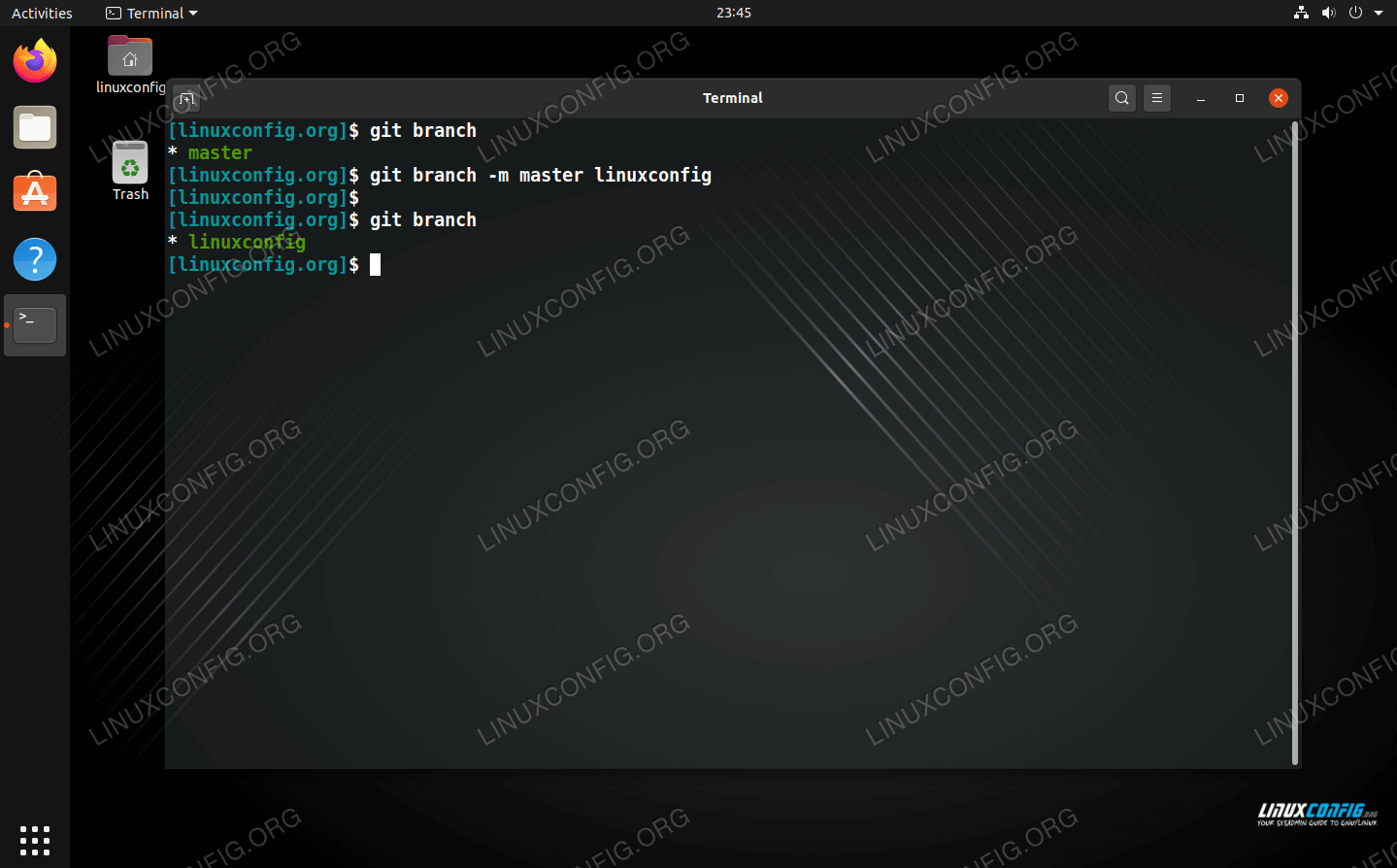

- #GIT RENAME REMOTE BRANCH HOW TO#
- #GIT RENAME REMOTE BRANCH FULL#
- #GIT RENAME REMOTE BRANCH SERIES#
- #GIT RENAME REMOTE BRANCH FREE#
To do this, use this command: git push origin -delete If you want to rename a branch that has already been pushed to a remote repository, use the command below: git push origin -u Īnd now you will need to delete the old name.
#GIT RENAME REMOTE BRANCH HOW TO#
Use the command below to determine your current branch name: git status How to rename a remote git branch If you're on a different branch and want to rename it, use the command below: git branch -m

You can use this command if you are already in the local branch you want to rename. Most people want to change their branch names in these situations. In a hurry, you might name a branch that doesn't accurately describe the code, or you might want to rename it.
#GIT RENAME REMOTE BRANCH FREE#
They give you a way to work alongside your master branch while keeping it free of clutter and unfinished code. Git branches are distinct stages in the development of your project. Why would you need to rename a branch in Git? Git makes it simple to rename a git branch both locally and remotely. HTTP is an easy way to allow anonymous, read-only access to a repository.Have you ever needed to rename a Git branch? If so, this article will assist you in resolving the problem. Two of the easiest ways to access a remote repo are via the HTTP and the SSH protocols. Git supports many ways to reference a remote repository. This behavior is also why most Git-based projects call their central repository origin. This is useful for developers creating a local copy of a central repository, since it provides an easy way to pull upstream changes or publish local commits.

When you clone a repository with git clone, it automatically creates a remote connection called origin pointing back to the cloned repository. The git remote command is really just an easier way to pass URLs to these "sharing" commands. No, in order to rename a remote Git branch you need to delete the old branch name, and then push the correctly named branch to the remote repository. Instead, developers need to manually pull upstream commits into their local repository or manually push their local commits back up to the central repository. This means that information is not automatically passed back and forth between repositories. Git is designed to give each developer an entirely isolated development environment.

Rename a remote connection from <old-name> to <new-name>. The following commands are used to view the current state of the remote list. The git remote command is essentially an interface for managing a list of remote entries that are stored in the repository's.
#GIT RENAME REMOTE BRANCH FULL#
Instead of referencing them by their full URLs, you can pass the origin and john shortcuts to other Git commands. Instead of providing real-time access to another repository, they serve as convenient names that can be used to reference a not-so-convenient URL.įor example, the following diagram shows two remote connections from your repo into the central repo and another developer’s repo. Remote connections are more like bookmarks rather than direct links into other repositories. The git remote command lets you create, view, and delete connections to other repositories. These commands all have their own syncing responsibilities which can be explored on the corresponding links. Records registered through the git remote command are used in conjunction with the git fetch, git push, and git pull commands. The git remote command is one piece of the broader system which is responsible for syncing changes. Instead of committing a changeset from a working copy to the central repository, Git lets you share entire branches between repositories.
#GIT RENAME REMOTE BRANCH SERIES#
Users typically need to share a series of commits rather than a single changeset. This is different from Git's distributed collaboration model, which gives every developer their own copy of the repository, complete with its own local history and branch structure. SVN uses a single centralized repository to serve as the communication hub for developers, and collaboration takes place by passing changesets between the developers’ working copies and the central repository.


 0 kommentar(er)
0 kommentar(er)
